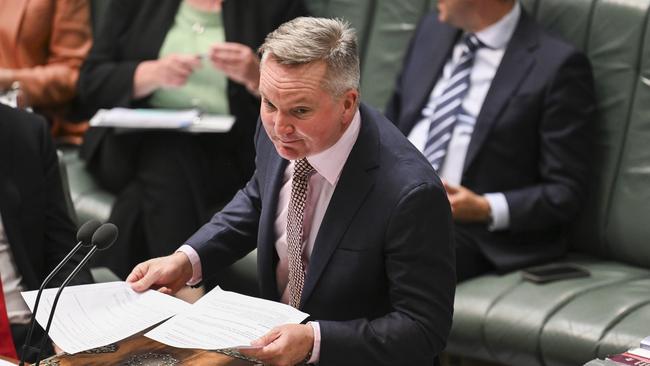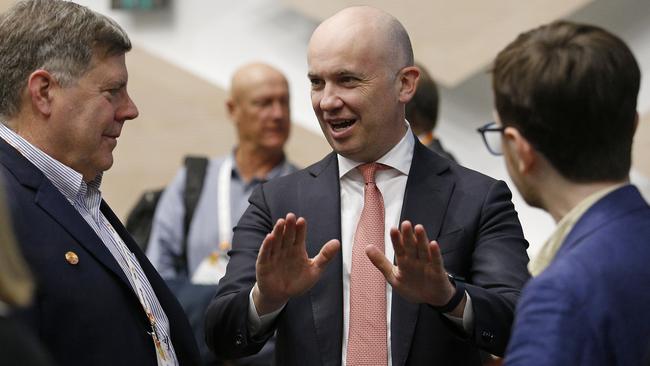
If so, we’ll need to be alert to the possibility of missing crucial information about the energy transition during the caretaker period. This includes decisions about the 2035 targets, the draft power price determination for 2025-26 due early March, and the budget on March 25.
Energy policy will again be a key issue, just as it was in the last election. Labor’s plan was to reduce emissions by boosting renewable energy, creating jobs and cutting power bills. The specific pledge to cut $275 from household power bills by 2025 was centre stage, repeated on 97 occasions, only to be the first of Labor’s broken promises. The effect has been pervasive, as continued price hikes have been in direct conflict with Labor’s promise.
Where once the nation had a comparative advantage with low energy costs, our power prices are now among the highest in the world. At a Senate hearing, the market operator, AEMO, made a startling concession that there’s no guarantee Labor’s transition will deliver cheaper power bills. Soon after, we learnt that an official report had airbrushed a warning about escalating power bill debts.
Who could have imagined growing queues of people in energy poverty in a country blessed with resources that are the envy of the world? It’s often overseas entities who are the beneficiaries of the billions we’re spending to build and subsidise renewable projects and a new transmission and storage system.
The only relief from escalating energy bills has been in taxpayer-funded assistance.
With each broken promise trust diminishes. Social licence has fallen away in regional areas carrying the burden of the transition. A transformation of this magnitude inevitably throws up unexpected problems and challenges. But in the rush to meet the 2030 targets and secure renewable projects, planning for an orderly transition was the casualty.
The priority should have been replacing lost capacity with reliable and affordable baseload power, ensuring the lights stayed on and the grid was secure. This hasn’t happened, as witnessed recently with the calamity at Broken Hill.
The town was assured that in the event of an emergency it could run on renewables, supported by a grid-scale battery. However, when seven towers collapsed on the high-voltage transmission line, the backup system failed.
Two weeks of rolling blackouts followed. The Mayor summed it up: “The reality is it’s not consistent power. You don’t have that baseload power, so for Broken Hill it’s almost useless.”
It’s taken a group of retired engineers to draw public attention to the exorbitant costs and engineering constraints of floating offshore wind projects in the Hunter and Illawarra. One proposal for the Illawarra was based on 105 floating turbines, the size of the Centrepoint Tower, in ocean depths of 130-800 metres.
Huge public subsidies would be needed for these projects to be operational. Commercial realities probably explain why Equinor and Oceanex pulled out of the Illawarra, with no confirmation that BlueFloat Energy intends pursuing its earlier plans. There’s no independent advice that suggests Labor will meet its 2030 targets – the 43 per cent reduction in emissions, underpinned by 82 per cent renewables. From Senate estimates we know emissions actually increased by 0.4 per cent on Labor’s watch in the two years to June. Emissions are now 28 per cent below 2005 levels and renewables about 50 per cent short of target.

What would be the purpose of setting new targets for 2035? The government’s present intention is unclear, although the minister had promised the target would be “very clear to the Australian people well before the election”. He has sought formal advice about the target from the Climate Change Authority, whose newly appointed chair, Matt Kean, is a former NSW Liberal minister for energy.
The Authority previously suggested a 2035 target in the 65-75 per cent range.
This has been followed up by the chair telling an investors meeting the task of reducing emissions was “more urgent” after Trump’s win. Under the Paris Agreement, Australia is required to submit its updated Nationally Determined Contribution, including its 2035 emissions target, by the end of February.
This week Energy Minister Chris Bowen and Kean will attend the UN COP 29 gathering in Azerbaijan. The minister’s long-held wish might be realised if his lobbying secures support for Australia hosting the 2026 UN Climate Conference. The Albanese government will have failed to read the room in pursuing a “vanity project”, in the midst of a cost-of-living crisis.
Time’s up for the opposition to provide details about its energy policies and the costs of its proposals. For its part, the government needs to be unequivocal about the 2035 targets, provide whole-of-system costings and make public the draft 2025-26 power price increases before the election, not after. If not, Labor will be seen as paying lip service to the public’s right to know, and failing in its commitment to transparency and accountability.
Jennie George is a former ACTU president and Labor MP for Throsby.




Donald Trump’s election win will lead to speculation about our election timing, increasing the likelihood that ours will be held before Easter.